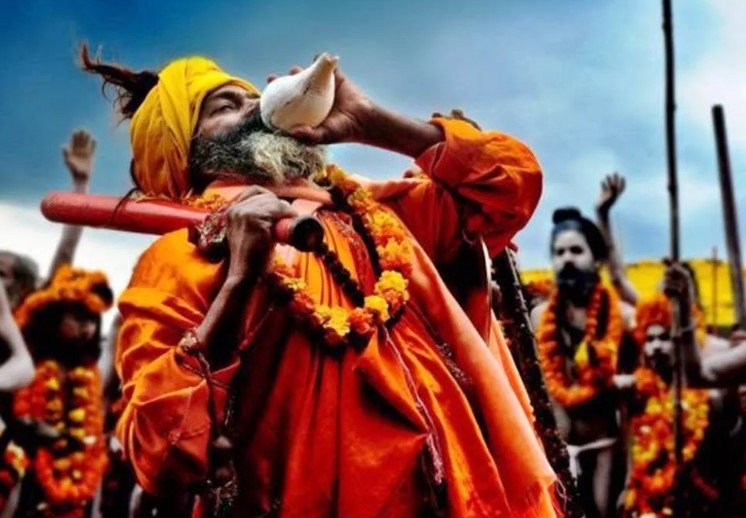Millions Expected for India’s Largest Religious Gathering, Yet Concerns Loom Over Economic Impact
As millions of devotees from across the world gather at the Mahakumbh in Prayagraj, Uttar Pradesh, the state is hoping that this colossal religious gathering can help boost local businesses and attract investors. However, some economists remain skeptical, questioning whether the long-term economic benefits will live up to the government’s ambitious projections.
The Mahakumbh, a 45-day festival that happens every 12 years, is widely regarded as the largest religious gathering in the world. This year, with millions of visitors expected, the Uttar Pradesh state government has invested heavily, pouring in millions of dollars to prepare for the influx of people, hoping to generate both immediate revenue and long-term economic growth.
A Business Boom, But for How Long?
For local businesses in Prayagraj, the Mahakumbh is a lucrative opportunity. Arvind Agrawal, who has run a stationery supply business in the city for four decades, is witnessing the surge in demand firsthand. His phone rings constantly as customers inquire about key rings, calendars, and diaries, all adorned with religious imagery related to the event.

“I’ve never seen demand like this before,” Agrawal says. “The festival brings in a rush of business that helps many local businesses thrive. But it’s important to remember that it’s temporary. Once the festival ends, business returns to normal.”
Local vendors selling everything from religious items to food are preparing for the influx of tourists, with estimates suggesting that over 100 million people will visit Prayagraj over the course of the 45 days. The state government is also rolling out large-scale infrastructure projects, hoping that the improvements will leave a lasting impact, even after the crowds disperse.
Despite the optimism surrounding the event, some economists warn that expecting substantial long-term returns from the Mahakumbh may be unrealistic. While local businesses in Prayagraj will certainly benefit, the broader economic impact could be limited.
Skepticism Among Economists
Economists argue that the Mahakumbh is unlikely to generate the kind of sustained investment and economic transformation the state government hopes for. While the event brings in a massive number of visitors, the economic activity generated by religious festivals like the Mahakumbh tends to be temporary, with businesses that thrive during the event often struggling to maintain momentum afterward.
Moreover, there are concerns that the funds invested in preparing for the festival may not yield the desired returns. In the past, other religious events in India have shown mixed results in terms of economic gains. In some cases, the heavy investment in infrastructure projects has failed to translate into lasting improvements for the local economy.
Tourism and Infrastructure Investment: The Double-Edged Sword
The state’s massive investment in infrastructure, such as roads, sanitation, and public transportation, is expected to cater to the flood of visitors arriving in Prayagraj. While these upgrades will improve the city’s facilities in the short term, critics argue that they may not deliver the kind of sustainable growth needed to make a meaningful impact on the region’s economy.
Additionally, Uttar Pradesh is competing with other tourist destinations in India, and there’s a risk that the state may not be able to maintain the interest of investors once the Mahakumbh ends. Experts argue that the state government’s focus should shift toward more long-term economic planning and diversification rather than betting on temporary events.
Some Positive Signs Amid Challenges
Despite the skepticism, there are some positive indicators. The Mahakumbh does offer an opportunity to showcase Uttar Pradesh as a viable tourist destination. If leveraged correctly, the increased visibility could lead to future investments in sectors like hospitality, retail, and transport. However, this will require careful planning and sustained efforts beyond the festival itself.
Moreover, the event does offer short-term relief for businesses like Agrawal’s, who are seeing a sharp increase in sales during the festival period. For these local entrepreneurs, the Mahakumbh is an economic lifeline, even if it’s just for a brief time.
Could the Mahakumbh Spark Long-Term Investment?
The question remains: can the Mahakumbh truly transform the local economy, or will it remain just another religious event with limited economic spillover? While the potential for growth exists, the long-term effects of the festival on Uttar Pradesh’s economy remain uncertain.
For now, businesses in Prayagraj are making the most of the boom brought by the Mahakumbh. But the state’s leaders may need to temper their expectations about the lasting economic benefits that can be derived from such an event.
